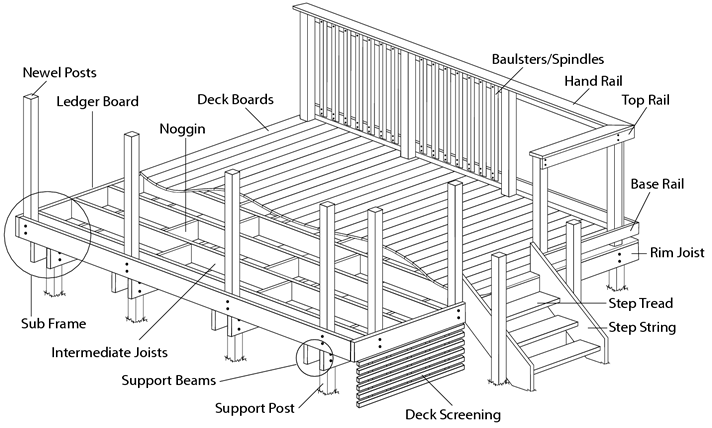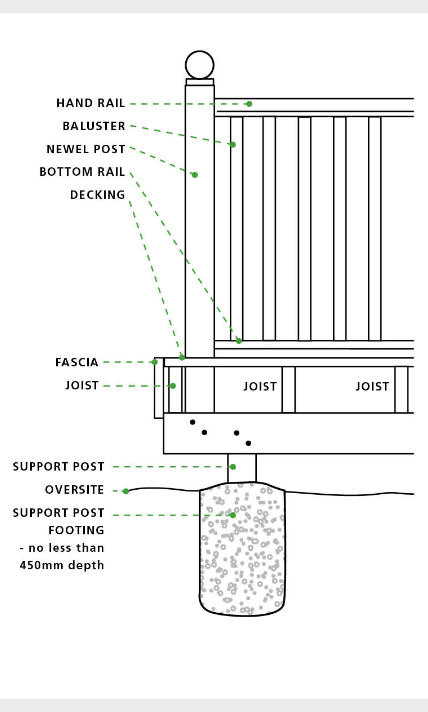Below the subframe
|
|
| OVERSITE |
Area under deck. Must be free draining or of a gradient at least 1 in 40 to allow water 'run-off'. |
| FOOTING |
A concrete pier that bears the weight of the deck. |
| SUPPORT POST |
A vertical support that sits on or in a footing. Use Q-Deck Multi-purpose deck post material. |
| BEAM |
The main horizontal timbers of the deck (support the joists). Usually a pair attached to either side of the support post. |
| JOIST |
Multiple horizontal timbers that support the decking boards. |
| MINI JOIST HANGER |
Connects joists to beams so both top edges are flush. |
| LEDGER BOARD |
Beam secured to building to support deck structure. |
| STRUCTURAL FITTING / BOLT |
A long substantial bolt or screw for fastening subframe elements and newel post. |
| NOGGINS |
Short pieces of timber, fitting between joists for rigidity. |
| WEED BARRIER |
A rot proof fabric laid on oversite. It allows drainage while minimising weed growth. Covering it with a layer of pea shingle maximises its performance and longevity. |
|
| Preservative treatment classification -USE CLASSES (UC) |
| Use Classes are defined by British and European Standards (as defined in BS.EN. 335-1), providing a guide to the risk of decay or insect attack to timber components, depending upon their end use. The higher the use Class, the higher the level of preservative protection is required. |
|
| Use Class |
|
|
| UC1 |
Internal building timbers with no risk of wetting or condensation. |
| UC2 |
Internal building timbers with a risk of wetting or condensation. |
| UC3 |
External building, fencing and landscaping timbers used out of ground contact. |
| UC4 |
External building, fencing and landscaping timbers used in ground contact. |

